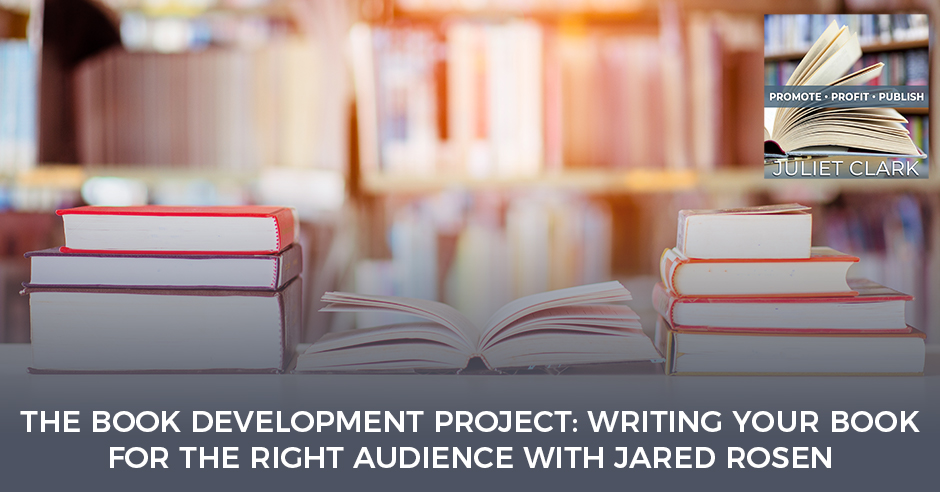
Countless books are extremely well – written but poorly positioned because the authors don’t really know who their audience is. For award – winning author Jared Rosen, one thing he always keeps in mind when writing a book is to create the avatar of his reader. He joins Juliet Clark on today’s show to discuss how you can write your book for the right audience. Jared is the Founder of DreamSculpt , a world – class literary agency behind many bestselling authors, including Eckhart Tol le and Marie Kondo.
—
Watch the episode here
Listen to the podcast here
The Book Development Project: Writing Your Book For The Right Audience With Jared Rosen
We haven’t had a guest who is as versed at what we’re going to talk about as Jared is. Jared Rosen is the Founder of DreamSculpt. He is an innovator in digital media publishing. He’s published over 50 media enhanced eBooks for many bestselling authors and filmmakers, and has published dozens of books and print. Jared is the author of three books of his own, including the groundbreaking book, The Flip. As a thought leader, he has presented in venues ranging from TEDx Malibu to McKinsey & Company, Sydney, Australia. In 2000, Jared co-created the Children’s Emotional Literacy Project endorsed by Mayor Richard Riordan and Norman Lear. Welcome, Jared.
Thank you for having me on your wonderful show.
I’m glad to have you. Jared and I met through a mutual client of mine. I didn’t even know someone who was as in-depth at book development was out there in the world, helping authors develop commercial-grade books. Could you explain? A lot of people out there think, “I’m going to self-publish my book and now I’m commercial.” Explain what you do in this context because you take people to a much higher level with your book development.
At first, what I’m about is the right book concept that’s authentic. I love the fact that the word authentic and author share the same root, including authority. It’s stepping into the value of who they are as the author. For me to support that and find the best way to position them, have a book and a title that is culturally and socially relevant that’s emotionally engaging, and work them to develop the book. Once we develop the book, at the same time though, and you’d know this being in the industry as long as you have understanding, there are a lot of moving parts that need to be synchronized.
We’re only focused in the beginning. I’m getting that what’s the experience that people want to have with your book and then shaping a launch, and knowing there are always moving parts that need to be working together. When we get to the publishing end of it, DreamSculpt imprint, by imprint meaning when we publish the book, it’ll say DreamSculpt on the cover, on the spine, and the copyright page, but we’re an imprint of Waterside Productions, which is why I’ve decided to come back into publishing books because we have an incredible opportunity to take people to as far as they could possibly go.
Waterside is a literary agency. It has represented some of the great thinkers of our time, starting with the Dummies personal development space and many of the authors like Eckhart Tolle and Neale Donald Walsch. What happened with Waterside was they saw how many people had wonderful, inspirational, and motivational books that couldn’t get deals because of what’s happening in the publishing world. They were invited by Amazon to be a White Gloves Partner, starting out doing some digital publishing. One thing led to another and now Waterside has the ability to have full distribution to bookstores, which is a small percentage. Apparently, only less than half of books are sold in brick and mortar.
Of course, the literary agency has foreign rights. For me, it’s like, “Let’s line things up and do things strategically to potentially get to the highest possible place,” which is having your book well-positioned on the web and on Amazon, and to be able to get into bookstores. It is a bit of work to get your book off the ground digitally first, that would then make sense to, typical the amount of book is usually 5,000. I want to make sure that, since the bookstores are limited in the last few months. Many of them haven’t even been open.
It’s obsolete at this point. Unfortunately, you can’t go in and browse, which is one of my favorite things to do. I love going into an actual bookstore. Let’s talk about that a little bit because you help people with developing the book. Most authors in the entrepreneurial space, somebody says, “You need a book to be an expert,” which you know my thoughts on that. I know my whole audience knows my thoughts on that, be an expert first. There’s more to it than pulling out, doing an outline and then starting to write. Talk about that first space, that discovering your audience, because if you’re not writing the right book for the right audience, you have no book.
I have seen countless books that are extremely well-written, but extremely poorly-positioned because they don’t know who their audience is. The first thing that I do when I work with somebody is for them in their mind to create the avatar of their reader. Who is that person? What’s their mindset? You can look at it from the perspective of psychographics. Where do they live? What’s their age, median age? Understand that because you can then be much more personal. Even in a nonfiction book, it does require emotionally engaging with the reader. Storytelling is a great way to do that, even with the nonfiction book to integrate the storytime.
A book can become a bestseller a year later when you continually work on it and share the content. Share on XI help people in the beginning discovering who they’re writing it to and what’s the experience they want the reader to have. If they can answer this question, which is part of the synopsis of back flap copy that would be on their book when it’s published. The question is, “After the reader has read this book, then they will what?” To answer that question, because then you deliver it. After a reader reads this book, they’ll learn about clouds, every kind of cloud. They will never look at the sky the same way.
I want you guys to notice what he’s talked about there. Most writing coaches will get into the demographics. The demographics are those boring things about everybody. What Jared was talking about those psychographics, that’s the emotional punch you need for that marketing. If you don’t have that black flap written in an emotional way, nobody’s going to pick up that book and read it. It’s very important. You and I know that most people, when they get to the point where they’re writing that book, a lot of them have book products and services that aren’t selling either because they didn’t nail that. This is important because it’s leading to probably another failed product that’s in their repertoire of products. Once you’ve done that and you’ve got it nailed, talk a little bit about that book concept development. For a lot of people, what you’re going to talk about doesn’t match what they do, which I call Barfa book because they didn’t do it.
I’d love to hear more about that. The go logline on that one, so I can address it more clearly. You’re talking about people that it’s a catharsis.
Everything is on the page. They think it’s being authentic. It’s TMI. It’s not the audience relevant. It turns people off like, “I didn’t need to know that about your mother.” Talk about how you put that together and make that all relevant.
I’m part of a team. It’s my company and I’m here to help them bring the book concept in initially. Certainly, when they get to an editor, that’s going to help clean up things like redundancies or too much information, which a lot of times is not relevant. In some cases, it’s invited because there’s too much information and too little of the essence of the author in there and authenticity. How I work with that is once you get a sense of what that primary concept is and who you’re writing to the structure of it.
Let me distinguish between a novel or fiction and nonfiction books. In writing a fiction book or writing a novel, it streams out of you. It’s a tremendous amount of work in structuring, the character development so people know who’s that person. That way, they have to go back to the one and figure out who that person is. It has its own complexities. In nonfiction books, which most people that are business-oriented with their books, they’re nonfiction books because they have a specific genre or specific niche. That’s what they need to understand. How to engage and how to speak to that audience in a way that’s going to emotionally engage them, that they’re going to feel something. Somatic writing is what they’re feeling in the moment as reading it.
In the case of like the brain dump and everything comes out there, it’s useful. How I work with somebody in that respect is whatever is coming out, it’s their content, it’s original and it’s valuable. It will edit us from saying in the team, there is somebody that will come in and clean it up at the end. It is structured into the book, that’s why it’s important. I believe that it’s intentional if it’s storytelling and a nonfiction book. With the use of subheadings, you can take somebody from the storytelling into the didactic. Without having storytelling in nonfiction books, people are going to retain less.
It’s good to let it all come out and do the catharsis. How I’ll work if somebody already has that stuff already in journals or where they say, or they put into a book format that this is not quite it yet, that’s raw materials. When I work with them, I see it like I’m helping them like an architect to help them set the structure. Let’s say, it’s a chapter of eight chapters. You look at those chapters and you see that there are subsets, you call them subheadings. Imagine that those subheadings are buckets. You go into your content, your journals and let’s say I have a book about fruit and chapter six is about strawberries. I could start out with a story about how I love strawberries where they connect, and then through subheadings we’ll move into teaching people anything like how to make strawberry jam.
Let’s say the author has already written in his journal stories about when he was a kid and he was, “I’ll pull from that story about how we used to pick strawberries.” You copy paste and dump it in there. Once you’ve distributed the content, it’s a very nonlinear approach but you can see where everything fits in their respected place. That works well when people want to take their “brain dump” or research in many respects if it’s a nonfiction book. I see it as architecture. It’s a nonlinear process. The linear is like building a building. You have to build the structure first, then you come in and you put in the floors, and you put in the rooms, and you furnish it. If you build a book this way, by the time you get to it, many rewrites are going to happen, so it’s fluid. You get to that place where you hand it off to that expert that’s going to clean up the grammar that’s potentially going to make it a little bit more polished.
There’s more to it though that people don’t understand. I know you do a piece that I love that you work with your people on it, because I end up doing it with them. It’s the messaging on it, writing the synopsis, getting the endorsements. Can you talk a little bit about that? Why is that so important to get that done?

Book Development: People need to understand how to speak to the audience in a way that’s going to emotionally engage them that they actually feel something.
One of the first things that we do in our book development is writing the synopsis, which is the back flap copy, which is for our books, 75 words pretty much maximum. That forces the person to be able to distill, “What is it? What will somebody going to get out of it?” That can be fundamentally where a lot of the copy comes from. Additionally, I mentioned the title and the subtitle. I’m speaking of the nonfiction books now. The title could be abstract. Books like Malcolm Gladwell’s Blink. Is that about eyes? What is it about? Old books like John Gray’s Men Are from Mars, Women Are from Venus. That’s provocative. That tells you a little bit more, but you still don’t understand, “I’m from New Jersey. I’m not from Mars and my wife is from Cincinnati.”
When you go into the subtitle, it’s concrete. The abstract title is the essence. That’s the most important thing in the messaging. Before you get into the form and the words and what it is, what’s the essence? I think the essence should always have an emotional factor too, because that’s how we connect. If you look at advertising and marketing, most of it is based on emotions. It’s the authentic, what’s the feeling you want them to have in the title? That’s the first thing that’s important when we shake that out.
It’s a lead to why you need to do your homework and do all this in advance. My book that’s coming out, I wrote the book and then somebody said the title. They didn’t say it as a title. They said, “I got pitched slapped.” I was like, “That’s the title of my book. That’s perfect.” With something like that, you need a subtitle to explain it because not everybody’s going to know what it is.
You need it because it can be abstract and that subtitle tells you what it is, “A guide to finding a relationship.” “That’s what that book’s about.” The branding of it creates, as we were talking about that multi-platform approach to it and I think that’s where the success happens. First of all, I’ve seen extremely wonderfully branded books that are empty. I’ve seen books that should be on the bestseller list that are poorly positioned. Sometimes, it’s not even the title. It’s how they structure the title of the chapters. There might be a question as far as the back flap copy and these 75 words. It’s refined. You have your own Lexicon. Also remember that when the book goes onto Amazon or the sites, the keywords are going to be inherently in the title.
If Men Are from Mars, Women Are from Venus, if all of this is in the title, people who are doing search on planets, they will find the book. With the subtitle that defines what it is in relationships, then for nonfiction books, you want that subtitle to define what it is and to use those keywords that people are looking for a book on that topic. It’s a balance of both, but the emotional engagement factor is so important. That’s why if you can get into the mindset. In the exercise I use, Imagine you’re in a bookstore. You’re the fly on the wall. Your book is on the table. I remember the first time I saw my book at WHSmith Airport Bookstore in Atlanta. I was walking by and I was like, “That’s my book. It’s in the bookstore.”
Imagine you’re now sitting in and you’re the author, and that’s your book. Somebody walks in, they pick up your book, they read the back flap copy. Is that going to get them to open it up? If that’s going to end, you mentioned endorsements. That was another thing. Even the same thing because of this shared mindset. If it’s a book on mind, body, spirit and Deepak Chopra writes the foreword, more people are going to pick up that book by association.
I call it not even the target market but your soul tribe. Who are the people that think, that you would eat at the same restaurants, ideally that they’re eager for your book? Even if it’s 0.5% buy it, you could have enough money for the rest of your life. There are millions of people. That’s one thing. The other thing is back to the bookstore. You’re the fly on the wall and you’re watching somebody. Now, they pick up the book, now they’re skimming through it and you’re clocking five minutes. They’ve been with your book for five minutes. You’re the author. You were the fly on the wall. Now you come up and you say, “I’d like to introduce myself. I’m the author of this book. I have one question. What made you pick it up?” If you can answer that question before you write the book, it’s going to be more successful.
The last part that I thought when I was looking over the syllabus that I got from Laura, and I love this, it is your strategy. They go into it, they write it and they think, “I’m going to sell a bunch of books.” The reality is that most people don’t sell a bunch of books. It’s like a gateway drug to your products and your services and all of the accessories that you’re doing around it. You need that complete strategy of how you’re going to do this and what you’re going to do?
I’ve been, playing on the internet since the earliest days in the ‘90s. I saw what happened with books and book promotion. I’ve watched every trend and I saw when they were going to die because everyone starts doing it. If you look at one trend that died out. I remember for years people were believing that, “If you buy this book, you get $5,000 worth of valuable products.” The digital downloads of other authors don’t last. Authenticity is important. Starting slowly and finding who your true tribe is and offering. The model that I want to share that came to me one day around the internet and specifically books is the small, medium and large model.
Smallest give it away, but it’s something of substance. You’re not giving away a brochure, you’re giving away something that is a value. The medium is the book because it’s maybe $17.95 or $9.99 or whatever it is. For most people in nonfiction that are writing and they’re in a specific area and they’re an expert or whatever it is. I don’t want to use the term upsell, but there are programs that go further than the book that take you further.
People still value physical books. Share on XSome of them could go run into tens of thousands of dollars. One thing as well and an important thing is, where do they buy the book? If they’re gone directly to Amazon, you have no idea who they are. It’s good to gather your community and find out who the people are. You’re selling it on Amazon, but it’s important sometimes for people. If they put out a video or something like that, send them to a landing page and have them opt-in. Now, you know who they area and there are other things that they’re going to want to do that you won’t find out through Amazon who bought your book.
You better have good gifts. I’ve seen some awful stuff where they’ve done that, that obvious it’s lead capture and then you look at somebody like Donald Miller and StoryBrand. He has all these worksheets and he is credible. If you’re going to do that, you need to make it good.
Authentic is number one and put the rigor into it and there is something that shines with everything I believe. That’s why, if you look at what we call in books these days, I’m a person that in 2010 was on the leading edge of putting media into eBooks and believe that that’s where things were going. It was a good use for what we were doing. At the same time, I valued the literary tradition and what is a book and what’s not a book. When we created the MTV book, we would take a book like Ervin Laszlo’s The Akasha Paradigm, which is brilliant and we would put the videos of Deepak Chopra and Marianne Williamson talking about it. It enhances the experience, but we distilled it down to 30 pages instead of 300 pages, but it’s authentic and actual knowledge and business that people have.
When it comes to books and what we find with books, what’s also happened is people use books as lead magnets and download the free eBook. What is a free eBook? An eBook should be an electronic facsimile of a book. In many cases, when it’s a free eBook, it’s deceptive because what it is an executive summary or something that in the old days before there was electronics would be called a brochure. The literary tradition is extremely important. What is the book and what is not a book? It’s information, but is it a book.
We stopped on the medium, what’s that high end?
That’s small, medium, or large. Small is the giveaway, the medium is the book and that will lead if you get their name and know who they are. The large is depending on what you’re doing, because I’ve worked with countless coaches, executive coaches, CEOs, and all kinds of people in the business world that written a book fundamentally to position themselves, why they have a lot of value, they’ve contributed something of value that’s worthy to be a book about it. The large can be anything. It could be an actual product that you sell digitally like webinars and programs like that. For many cases, I don’t like to tell them like bragging rights or whatever makes you more credible, but it does make you an author. I’ve worked with one fellow in the business world that is CEO of one of the top companies, everybody would know and yet felt deficient because he never had a book. I’m questioning, “Why should the CEO have a book?” The CEO had a lot to say because there’s a lot of value and wisdom for many people it does open doors and ways.
We play in all those spaces, but in that medium space too, that book becomes your trust factor for people who don’t know you, like you, and trust you yet. They’re not willing to go into that bigger product, but that book is an opportunity to get to know you and experience your value out in that world too. It’s that trust-building, get to know you tool.
It’s the same thing with the author being the authority, because on that particular subject and it’s interesting when I work with people that don’t own it. It’s like, if a book about post-traumatic stress is written by somebody with three PhDs from Harvard, qualifies that person, they’ve studied it, they research it. That makes them the authority, but also the woman that’s spent twenty years being beaten is the authority as well on that subject. It doesn’t need the PhD and at the same time, this value of both. I think that becoming an author used to be ways to build self-esteem and now some people question.
For the first time, big deal and everyone made it accessible like, “Everyone can write a book.” Everyone can make an album now too on GarageBand on your iMac. We’re coming to a place of recognizing that yet. It’s as well as, I appreciate being on this podcast, this could be a television show. It is and I have been on podcasts and I’ve been very appreciative to be on. What’s happening which is cool is with what’s going on with this COVID, is we’re starting to see the people that were put on pedestals like you and me. We know exactly what our home looks like now, sometimes their kitchen and you’re doing the same thing I’m doing, we’re both using Zoom, only European broadcasts on CBS.
That’s a factor of being an author to know that stepping into it opens doors and be humble and understand as far as the book sells. It’s for self-published authors, the numbers are quite low. 500 is good. For traditional publishing with distribution, if it runs 5,000, you saw your first run. That’s good too. You start looking at millions, you see the books that when you go into Costco know that every one of those books, there’s a major media company behind it, multibillion-dollar media company and those are the books that are in a different world of marketing, but also understand this, traditionally-published books die fast because shelf space has been reduced.
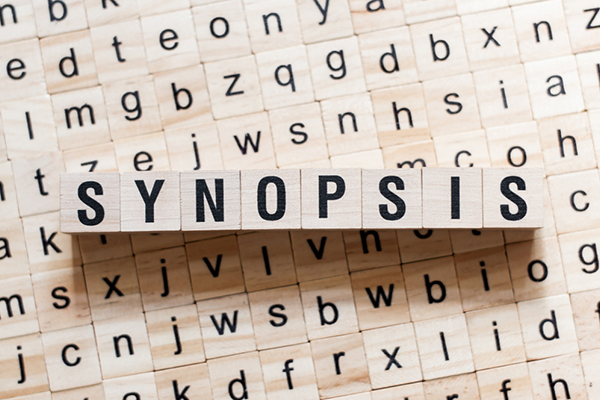
Book Development: One of the first things to do in book development is writing the synopsis.
Maybe it was 3 or 4 months, many years ago. Now, it’s maybe 3 or 4 weeks besides COVID. What happens to the publisher and traditional publishing is they’re gone. I believe in everyone that I’m working with, unless it’s a book about a specific thing that’s going on, it’s an evergreen book. Working with somebody like yourself and taking the time to do the work overtime, because books can become a bestseller a year later. You’re continually working on it and sharing the content and being out there.
It’s knowing going in what’s your goal. We have an author who we haven’t even put his book on Amazon yet and he sold over 2,000 copies via the free BookFunnel. For him, he’s been putting this off, putting it on Amazon because he is working them into those next stage products. Know going in, what’s your goal? Do you want an Amazon bestseller? Is that the end all be all? Do you have a backup plan? Do you have other ways to put this out in the world? That strategy is having to be strong from the get-go. I have to ask you, be honest here, how many of them don’t do that until the end? Because they say, “I don’t have the bandwidth.”
I’m with you 100% as far as strategy. There are many moving parts. You have to realize and you have to synchronize those moving parts, like your prospecting for endorsers and you have covers made six months before. Even before you can send in sample chapters, you want to connect with somebody or a conference in a year from now. All of these moving parts, but I think over time, because you have this space and time model in traditional publishing where it does happen fast, and the support’s gone if it doesn’t happen fast enough because of that aspect of the industry. I believe what you’re doing is phenomenal. I look for our authors to be working with you because, it does works. People valued physical books.
After COVID people would want to go to the movie theater, “It’s so boring, let’s go dancing.” We prefer connecting with people and that’s a good thing to be able to get it out there. I appreciate what you’re doing and to be able to have such success and then get on Amazon, but keep it rolling. A book never dies. For some people, it is something that’s I have books I’ve been through. I probably may have given away close to 7 to 8 of my books. I’ve had a lot of books. I still have a nice bookshelf, but I would say those books that are left, they’re the treasures of mine. Make your book a treasure for someone else.
Even my old crappy mystery novel is still selling. I’m always amazed. Make them evergreen. You have a mastermind. People can work with you one-on-one. If people want to explore this a little bit more and get a good book out there, where do they find you?
Come to DreamSculpt.com. We have a lot of media. We change some things, but we have the media eBooks that are up there. We also have a dozen videos that we do for the authors, the books that are forthcoming, the programs we do. You can get in touch with me personally or sent an email to Bill@DreamSculpt.com. Bill is amazing. He helps give you any kind of information, whatever you need. Instead of doing the webinars, I’ve decided for people that don’t want to make a huge investment of time and money and all that, I’m taking six people and working together going through these steps in six weeks.
We do that as well as for people that wanted to sink into themselves and devote that one-month discovery that would come out of that. People have the branded book concept, the title, the subtitle, the structure, the titles of the chapters from essence to form, and we’re doing a lot of that. I used to work with people on a nine-month basis to get to the first draft. Know that when you work with us, we also have a Mastermind that goes on twice a month and there’s no charge. We work with one month for the discovery.
We’re building a community and when you choose to publish, when we get to that with DreamSculpt, you’re in company with Waterside, with authors like Eckhart Tolle and Neale Donald Walsch and The Dummies books. It’s a cool thing. To me, it’s all about having the opportunity with you and being around people that have like-minded, have good vibes, especially in book publishing. Anyone can say they’re a publisher and the thing is when you publish with Waterside, it is behind a lot of the digital publishing opportunities that came early in the ‘90s. It’s wonderful to be there and have a partnership with them.
I have to admit, I went through my Eckhart Tolle period, my face, and I did it all on videotape. I used to be able to do a killer imitation of him since he read his own books. I don’t think I could do it now, but it’s the best accent. Jared, thank you. It was great to have you on and we’ll be talking soon.
Important Links
- DreamSculpt
- The Flip
- Blink
- Men Are from Mars, Women Are from Venus
- The Akasha Paradigm
- DreamSculpt.com
- Bill@DreamSculpt.com
About Jared Rosen
 Jared Rosen is the founder Of DreamSculpt. As an innovator in digital media publishing, he has published over 50 media enhanced e-books for many best-selling authors and filmmakers and has published dozens of books in print. Jared is the author of three books including the groundbreaking book The Flip. As a thought leader he has presented in venues ranging from TED X Malibu, to McKinsey and Company, Sydney, Australia. In 2000, Jared co-created the Children’s Emotional Literacy Project endorsed by Mayor Richard Riordan and Norman Lear.
Jared Rosen is the founder Of DreamSculpt. As an innovator in digital media publishing, he has published over 50 media enhanced e-books for many best-selling authors and filmmakers and has published dozens of books in print. Jared is the author of three books including the groundbreaking book The Flip. As a thought leader he has presented in venues ranging from TED X Malibu, to McKinsey and Company, Sydney, Australia. In 2000, Jared co-created the Children’s Emotional Literacy Project endorsed by Mayor Richard Riordan and Norman Lear.
Love the show? Subscribe, rate, review, and share!

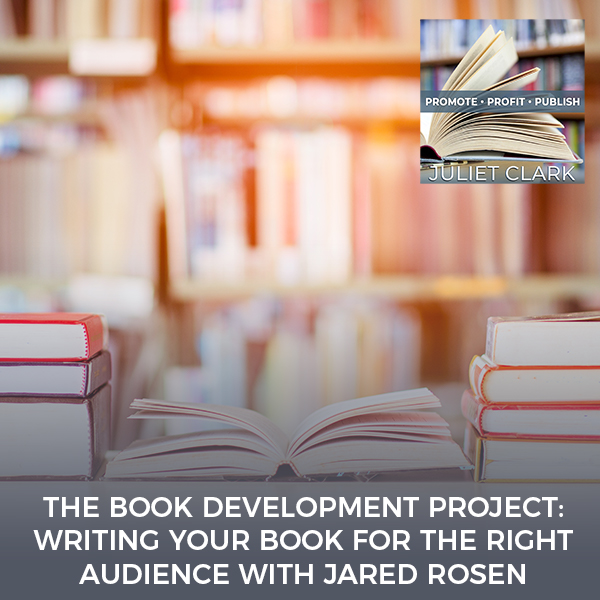


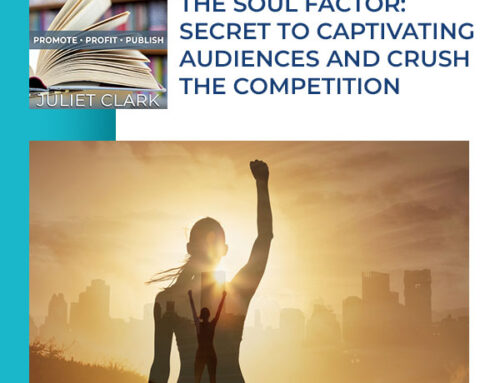
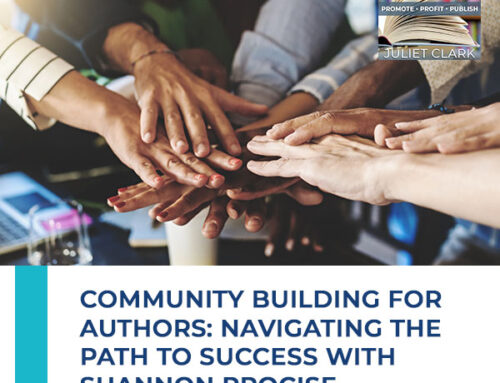
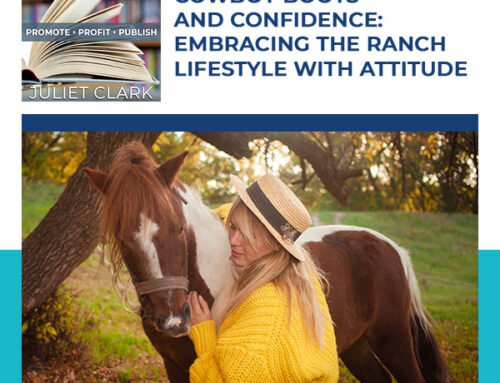


Leave A Comment